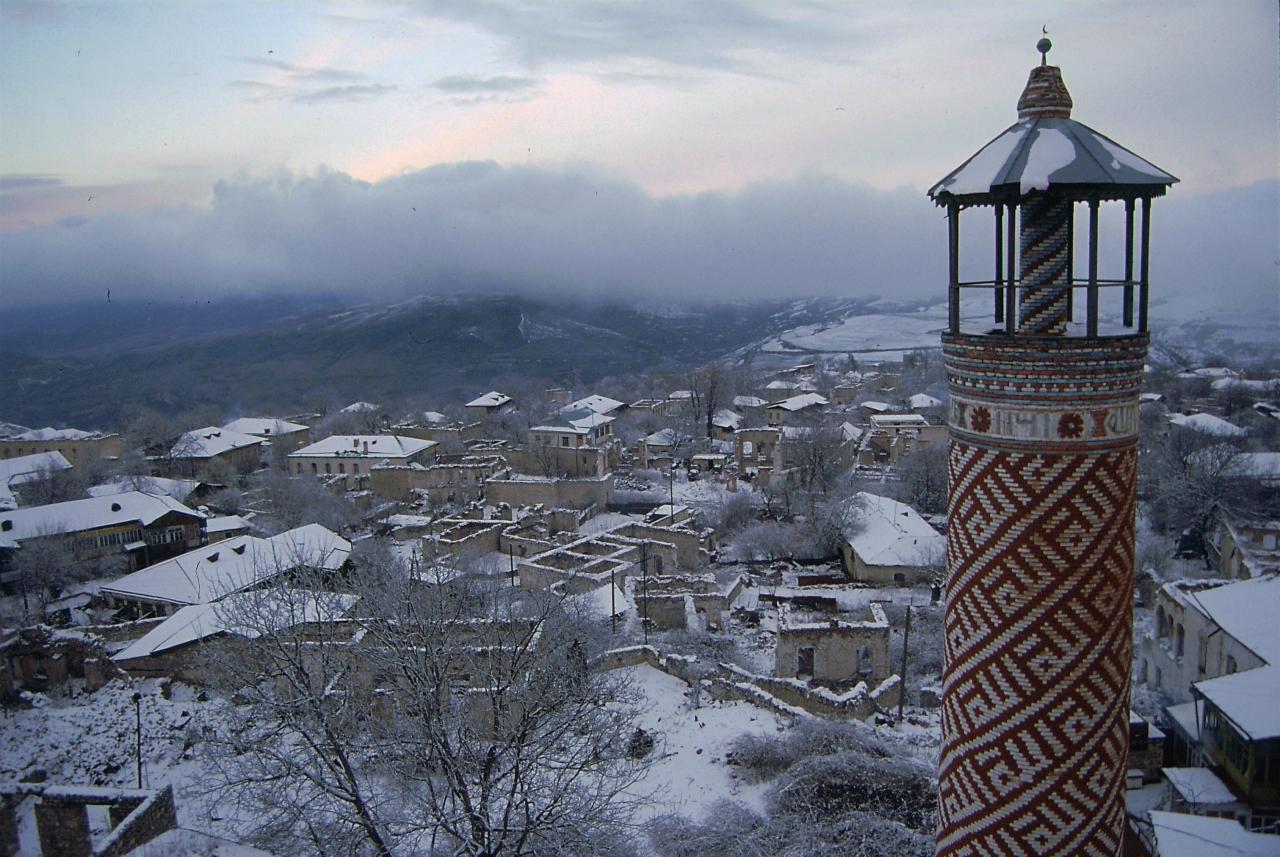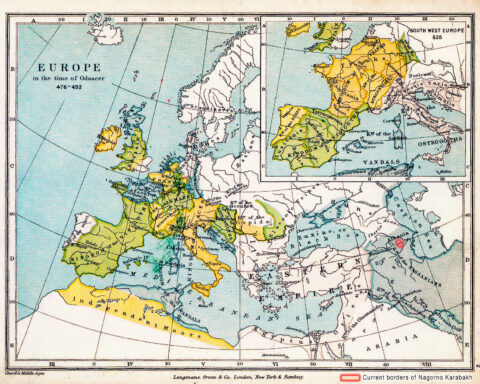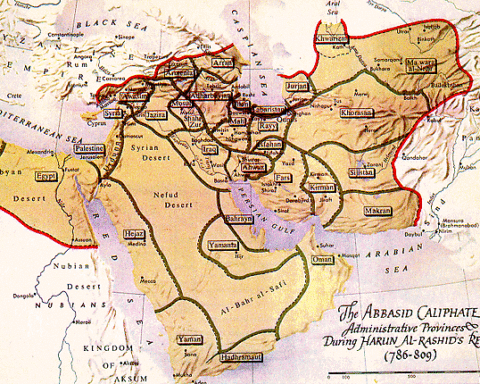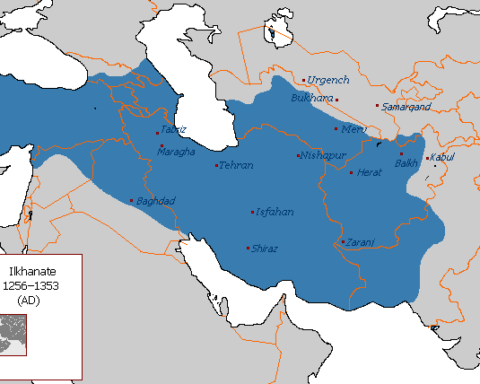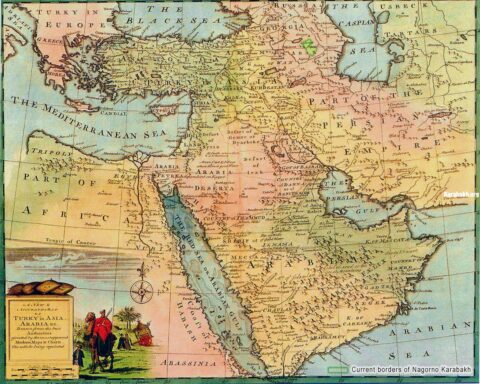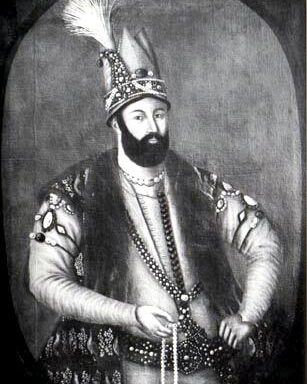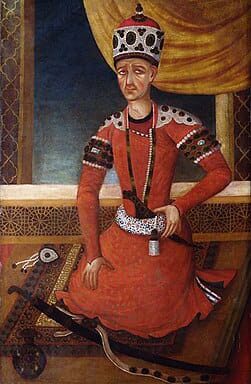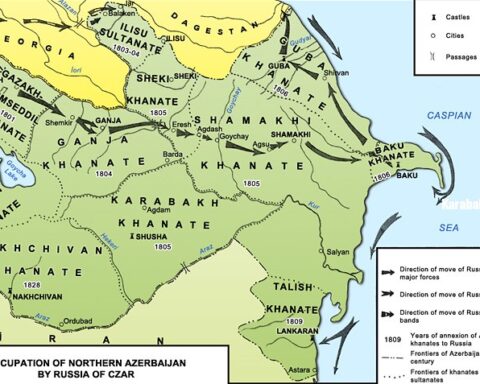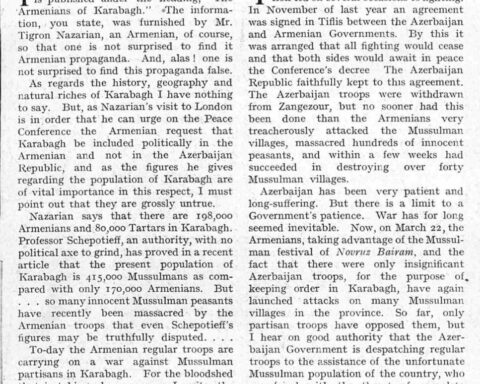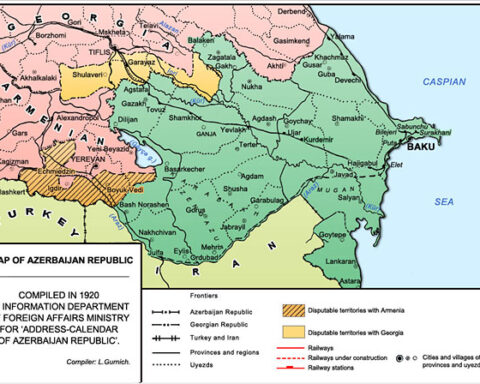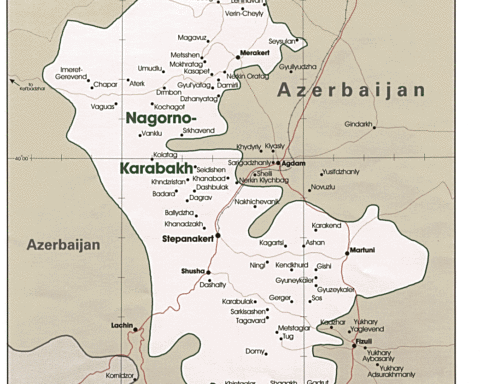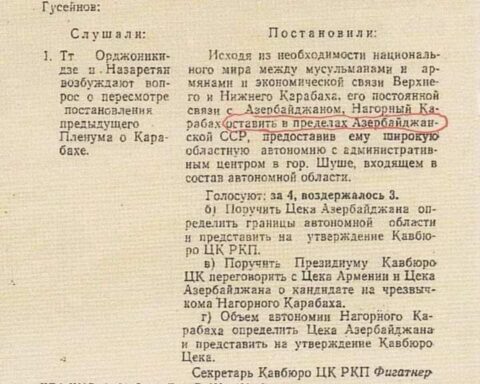Karabakh during the dawn of civilization
Karabakh region was the most ancient place of stay of the human being in the territory of the former Soviet Union. Uzerliktapa
Ancient population of Karabakh
In I Millennium BC such tribes, as Gargars, Utis, Saks, Sodes, which along with other tribes constituted the Albanian tribe union, lived
Albania and the «Greater Armenia»
Beginning from II c. BC Armenian state that emerged in Upper Euphrates carried out invasive wars against the neighboring countries. Western regions
- 1 million – 350-400 thousand years ago. A primitive inhabitant of Karabakh – Azykhantrope, who could obtain fire and could maintain it for a long time.
- 2nd-1st millennium BC. The emergence of the Khojaly-Kedabei culture, which is presently represented by the instruments and weapons made of stone and metal, and also with many ceramic wares. Yuzerliktapa – the most ancient settlement of the city type in the Caucasus also belonged to this civilisation.
- 8th century BC. The arrival of the Scythes in the Caucasus.
- 4th-3rd centuries BC. Establishment of the Albanian State.
- 2nd century BC. The beginning of the Armenian expansion on the Caucasus.
- 66 BC. The defeat of the Tigranes II and fall of the “Greater Armenia”.
- 387 BC. Partition of Armenia between the Sasanid Iran and Rome.
- 1st-4th centuries AD. Time of rule of the Parthian-originated Arshakid dynasty in Albania.
- 4th century. Commencement of spreading of Christianity in Albania.
- 5th century. The emergence of the Albanian alphabet consisted of 52 letters.
- 451. The battle in the Avarair field. The allied troops of the Armenian, Albanian and Iberian princes is defeated by the Sasanid army.
- 457. Renouncement of the fire-worshipping by the Albanian king Vache II and proclamation of Christianity as a state religion of Albania.
- 488 (498). The church assembly in Aluan strengthens the positions of Christianity in Albania.
- 6th-7th centuries. Amplification of the dogmatic struggle between Monophysites and Dyophysites. Adoption of Dyophysitism by Albania (Armenia keeps Monophysitism).
- 7th-8th centuries. The Mihranid dynasty rules in Albania.
- The 40s of 7th century. Invasion of the Arabs to Albania.
- 704. Execution of the last Albanian catholicos Nerses Bakur. With the assistance of the Armenian catholicos Yelia, the Arabs subdue the Albanian church to the Armenian one.
- 705. The Arabs complete conquest of Albania.
- 8th century. Spreading of Islam religion in Albania.
- Mid 8th century. Commencement of the de-ethnicization of the Albanian ethnicity and armenization of its Christian population.
- 7th-9th centuries. Mass resettlements of the Turkic tribes from the north to Albania. Commencement of the Turkization of the Albans.
- 816-837. Popular anti-Arab insurrection in Azerbaijan under the leadership of Babek.
- 9th-13th centuries. End of the Arab rule in Azerbaijan. Time of existence of the autonomous feudal Khachin principality in Karabakh.
Spreading of Christianity in Albania
Christianity that was utilized as an instrumental for strengthening the power of the Albanian kings and for struggle against the supremacy of
Spread of Islam among Albanians and imposition of the authority of the Armenian church over the Christian Albanians, which took place after
At the end of the 9th – beginning of the 10th century, the Albanian ethnic self-conscience revived and materialized in the creation
- 1215-1261. Time of rule of Hassan Jalal – the prince of Khachin, “the ruler of Albania”.
- 1220. The first invasion of the Mongol-Tatar tribes to Azerbaijan.
- 13th-14th centuries. Azerbaijan under the Mongol-Tatar yoke.
- End of 14th century. Invasion of Tamerlane to Azerbaijan.
- 1406. Banishment of the foreign invaders from the north Azerbaijan by the united forces of the local feudal lords under the leadership of Shirvanshah Ibrahim I.
- 1410-1468. Karabakh as a part of Azerbaijanian State of Kara-Koyunlu.
- 1468-1501. Karabakh as a part of Azerbaijanian State of Ak-Koyunlu.
- 1501-1736. Karabakh as a part of Safavid State (with breaks because of Ottoman occupation).
- 16th century. Transfer of power in Karabakh from the clan of Karamanlu to the Ziyadoglus family from the clan of Qajar.
- 1590-1608. Azerbaijan under Ottoman dominion.
- 1593. “The Survey Tax Book” of the Ganje-Karabakh province giving detailed information about the population of the region.
- 1603-1607. As a result of Savavid-Ottoman war the Safavid shah Abbas I retakes Azerbaijan. Throughout the war, both sides widely resort to the tactics of the “burned land” and mass resettlement.
- 1724-1736. Another period of Ottoman dominion over Azerbaijan.
Karabakh within the Safavid State
At the end of XV c. the Azerbaijanian State of Ak-Koyunlu was lacerated with its internal contradictions. By 1500 it disintegrated into
Karabakh during the Safavid-Ottoman wars
Emergence of a powerful Safavid State in the eastern borders of the Ottoman Empire, naturally, worried the latter a lot. Besides clash
Karabakh as an Independent Khanate – Karabakh Meliks
Karabakh as independent khanate
Nadir shah’s reprisal against Karabakhis
Establishment of the Karabakh khanate
Karabakh melikdoms
Fighting aggression
Heroic defense of Shusha
- 1725. “The extensive taxation register of the Ganja-Karabakh province” – an important historical document about the history and population of Karabakh in the beg. XVIII c.
- 1736-1747. Time of rule of Nadir shah. Repressions against the Karabakh clans and their resettlement to the inner parts of Iran.
- 1747-1822. The Karabakh khanate.
- 1751. The founding of the khanate’s capital city – Shusha.
- 1756. Assault of the Fatali khan of Urmia to Karabakh.
- 1763-1806. Time of rule of the Ibrahim Khalil-khan of Karabakh.
- 1795 and 1797. The heroic defence of Shusha from the army of the Iranian shah Agha Muhamed Qajar.
- Beginning of 19th century. Commencement of the Russian expansion to Azerbaijan.
- 1804-1812. First Russo-Iranian war.
- May 14, 1805. The signing of the treaty of Kurekchai on the joining of the Karabakh khanate to the Russian Empire.
- 1806. The brutal murder of Ibrahim Khalil khan and members of his family by the Russian major Lisanevich, which led to the mass anti-Russian uprisings in Azerbaijan.
- October 12, 1813. The signing of the Gulistan peace treaty. The Russian annexation of the Northern Azerbaijan, except Erivan and Nakhichevan khanates, which were left to Iran.
- 1822. Establishment of the Karabakh province.
- 1840. Establishment of the Shusha district (uyezd) within the Caspian province.
- 1868-1921. The Shusha district within the Yelizavetpol gubernia (province).
- 1823. The taxation register of the Karabakh province, prepared by the Russian officials Yermolov and Mogilevsky – the most important document on the ethnic composition of the region at the beginning of the 19th century. According to this document, Azeris made 78.3%, Armenians – 21% of the population of Karabakh.
- 1826-1828. Second Russo-Iranian war.
- February 10, 1828. The signing of the Turkmanchai peace treaty. Whole North Azerbaijan, this time including the Erivan and Nakhichevan khanates, is transferred to Russia.
- 1828-1829. Russo-Turkish war.
- September 1829. The signing of the Adrianople peace treaty.
- 1826-1830. As a result of the Russo-Iranian, and then the Russo-Turkish wars, and also according to the provisions of the Turkmanchai and Adrianople treaties, mass resettlement of the Armenians from Iran and the Ottoman Empire to the Northern Azerbaijan begins.
- 1897. First All-Russian census. According to its results, Azeris comprised 53% of the Karabakh’s population, Armenians – 45%. In the same time, the Armenians comprised majority in the Shusha district (in all other districts Azeris were still preserving their numeral superiority).
Karabakh: looking into the past in search of the truth
Barbaric extermination (1918-1920)
Staggering Facts about Massacres of 1918-1920
Pogroms of the Azeri villages in 1905
Monstrous Tragedy of 1905
First Armeno-Azeri clashes in 1905-1906
- 1905-1906. First mass ethnic clashes between the Azeris and the Armenians.
- 1917-1818. Russia is defeated in World War I and is lacerated by the civil war. Having found themselves outside the Russian control, the peoples of the Caucasus are left to their discretion.
- March-April 1918. Mass carnage of the Azeris by the united Bolshevik-Dashnak forces in Baku, Kuba, Shamaky, Lenkoran and other places.
- 27-28 May 1918. Establishment of the Azerbaijan Democratic Republic (ADR).
- June 4, 1918. The Batum Peace Treaty between the Ottoman Empire and the three South-Caucasian republics (Armenia, Azerbaijan and Georgia). Karabakh and Nakhichevan are recognized as the autonomous protectorates within the ADR. The Ottoman Empire is the first state, which recognised the independence of the South-Caucasian republics.
- January 15, 1919. Establishment of the Karabakh general-governorship within ADR headed by Khosrov bey Sultanov.
- April 3, 1919. The commander-in-chief of the Allied troops in the Caucasus general Thompson officially recognises the authority of the Karabakh general-governor Khosrov-bey Sultanov.
- August 1919. The Armenian community of Karabakh in its session officially recognises the authority of the Azerbaijanian government.
- January 11, 1920. The Supreme Council of the Allies and the League of Nations officially recognizes the independence of Azerbaijan (along with Georgia) in a de-facto level. Soon, a similar decision follows about Armenia.
- March 22-26, 1920 Mutiny of Armenians in Karabakh. An attack of the regular Armenian units on Zangezur.
- April 27, 1920. The intrusion of the 11th Red Army to Azerbaijan.
- April 28, 1920. Liquidation of the ADR and establishment of the Soviet power in Azerbaijan.
- March 16, 1921. The signing of the Moscow Treaty. Turkey withdraws its troops from Nakhichevan with the provision that it will remain within Azerbaijan.
- July 4-5, 1921. Discussion of the “Karabakh question” in the Kavburo of RCP(b) [the Caucasus section of the Soviet communist party]. Due to the persistent demands of the head of the Soviet Azerbaijan N. Narimanov, it is decided “to leave the Mountainous Karabakh within the Azerbaijan SSR, having granted it a broad regional autonomy”.
- July 7, 1923. Establishment of MKAR (Mountainous Karabakh Autonomous Region).
- Autumn 1945. Armenian SSR lays claim to MKAR.
- 1948-1953. Deportation of the Azeris from Armenia.
- 1963. 2,500 Armenians from Karabakh send a petition addressed to Khrushchev, claiming that Azerbaijan doesn’t give enough attention to the economic development of MKAR, and also hinting to MKAR’s transfer to Armenia.
- 1965. Moscow gives its consent to the celebration of the 50th anniversary of the “Armenian genocide” in Armenia. Attacks on peaceful Azeri population in Armenia increase. Troops enter Yerevan for guarding the Azeri-populated parts of the city.
- 1966-1967. The Armenian leadership once again applies to the Center with the request of transfer of MKAR to the Armenian SSR. This request follows with the addresses of the Armenians from MKAR complaining about “intolerable conditions” in the region. Moscow replies that this problem should be solved between two republics.
